#Kulangsu 鼓浪嶼
Photo

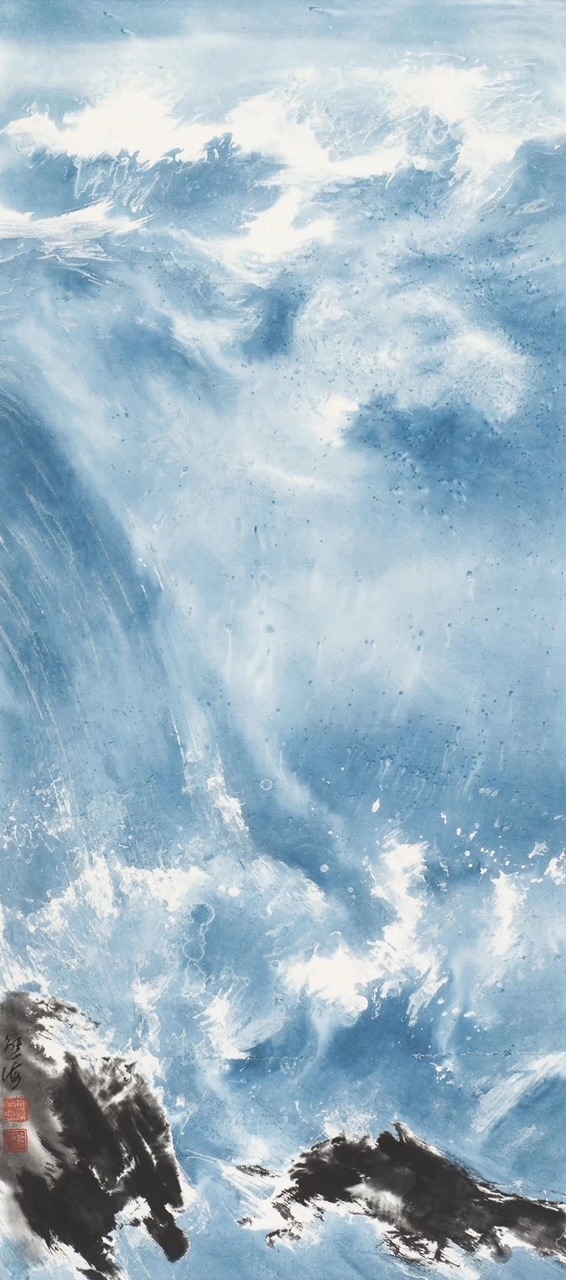
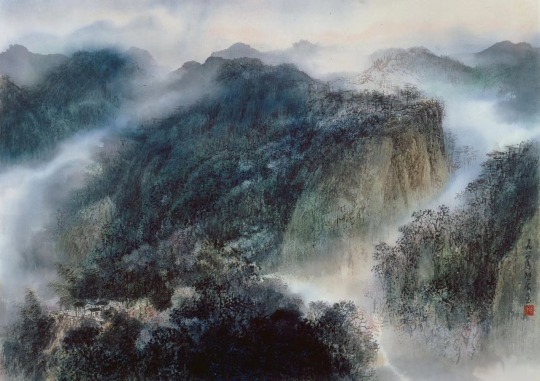
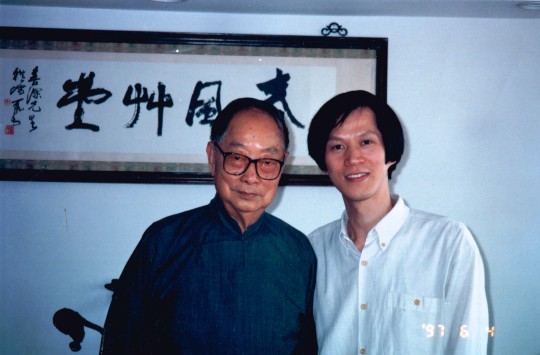

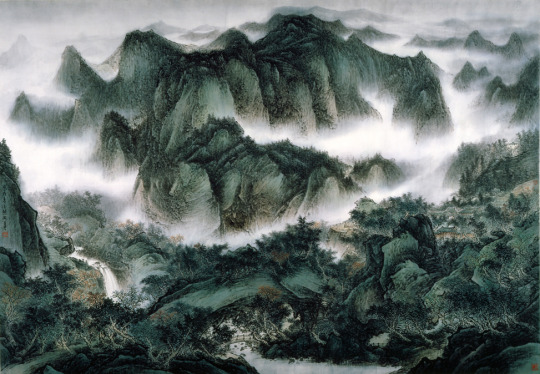

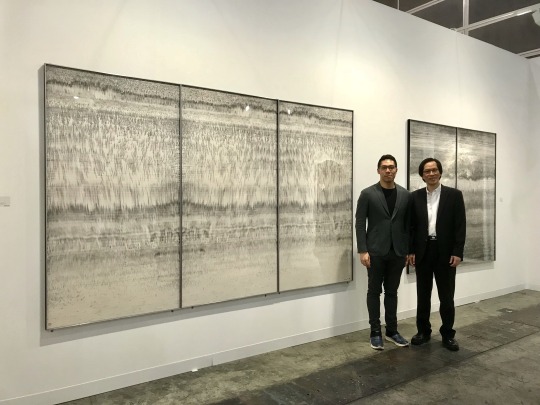
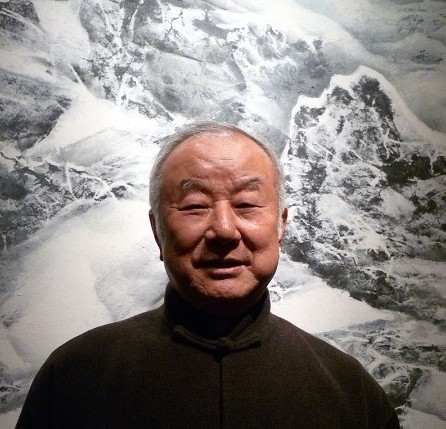
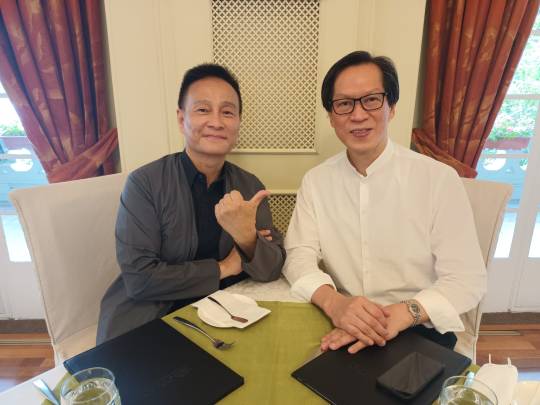
What Is Chinese Ink Painting? Why Are Artist Ink Paintbrushes Soft? What Is The Monumental Success Of ‘New Ink Painting Movement’ In Hong Kong?—Explained By Master Hung Hoi (熊海)
Some people paint what they see. Other people paint what they feel. For the Chinese, painting is a way to express philosophy and literary art such as poems. We see abstract art with our mind, and so perceive what we cannot see physically with our eyes. Abstraction demonstrates an escape route from reality in depicting paradoxically what reality is all about.
Chinese ink painting (水墨畫) is piously about the Nature which can be snow, clouds, mountains, rivers, lakes, trees, flowers, birds or insects. It symbolizes the spiritual and elegant characteristics of Chinese culture. Chinese ink paintbrushes are soft, contrary to the hard brushes in the West. They coincide with the gentle character of the Chinese and can facilitate an abstruse inquiry into philosophical notions loved by the Chinese artists and such notions are usually used to explain things in life. Artists express one-self through these objects without caring about the exact details of reality. It uses traditionally only black ink (later, colour ink is used by some) as an artistic language, together with shapes, lines, forms and symbolic marks to create a beauty in harmony with what is a break-through freedom from the visual constraints of real life. The inseparable spiritual trinity of a Chinese scholar lies in his ink images, poem and calligraphy (書法) appearing on a romantic sheet of silk or rice paper (宣紙).
Master Hung Hoi (熊海) is my favourite ink painter in Hong Kong. I love his willingness to try different styles and readiness to teach us what he has learnt. He shares with me his artistic journey and views.
Master Hung, “The classical style of Chinese ink painting flourished in the Tang Dynasty, more about 1,500 years ago. This artistic tradition in a mixture of water and ink is uniquely Chinese. The painting involves basically the same techniques as calligraphy and is done with a brush dipped in the black ink or colour pigments. Oils are not used. The usual materials on which paintings are made are silk or paper. I love ink painting. Through only black, white and grey, I can however see different colours.”
I asked, “What important role does Hong Kong play in Chinese ink painting?” Master Hung explained patiently, "Since 1842, Hong Kong, being under the British rule, had been a melting pot of people and ideas from all over. The city was a great mix of western and Chinese cultures. The ink painters here in the 60s logically had hesitations to be pleased with only traditional painting styles and concepts. They worked hard and determinedly, despite criticism, to lead a new direction now respectfully known as ‘New Ink Painting Movement’(新水墨運動). Lui Shou-Kwan (呂壽琨) who moved to Hong Kong in 1948 with an empty pocket was a pioneering figure in the movement. His semi- abstract images are metaphorical and very often used to reflect his religious belief.”
Master Hung took a sip of tea, “Great artist Liu Kuo-Sung (劉國松) taught in the Chinese University of Hong Kong in the 1970s. He used the paper-craft of paste and cut to create the visualisation of vivid snow on a painting. Wong Hau-Kwei (黃孝逵) was keen to develop ‘Urban Ink Art’ (都市水墨) which tried to present visual art forms arising from urban areas especially modern architecture. Kan Tai-Keung (靳埭強) incorporated western graphic design ideas into his ink painting. My son Hung Fai (熊輝), also an ink artist, is exploring the use of fountain pen to convey Chinese landscapes.” He chuckled, “After my recent trip to Paris, I started to mix acrylic painting techniques with Chinese ink ways.”
“Could I know your tale?” I asked. Master Hung positively smiled. He said, “My father (熊俊山) was also an ink painter. We lived on Kulangsu (鼓浪嶼) Island which was a place inhabited by artists. He taught me how to paint. As my mother was an Indonesian Chinese, we were able to migrate to Hong Kong for a fresh start in 1978. We lived in extreme poverty and I worked in an antique shop in Quarry Bay as a repairman. Art was the only path to my self-actualization. I kept on learning painting from Master Yang Shan-Shen (楊善深) who died in 2004. There came 3 turning points in my life. In 1981, my artwork was selected into the Contemporary Hong Kong Art Biennial Exhibition. In 1984, The University of Hong Kong offered me a job as a part-time art teacher in their extra-mural studies. In 1991, a famous scholar Hugh Moss agreed to be my art manager and as a result, I became a full-time artist. I loved my teaching post in universities and carried on my job till now. Students inspired me tremendously.”
The works of Master Hung Hoi are exhibited, collected and auctioned internationally. British Museum, the first public national museum in the world, bought his art pieces. He is one of the regular participants in overseas art exhibitions and the frequent ones are in the Chinese Mainland, Taiwan and Japan. He is now the adviser to a number of renowned museums and art organizations.
Master Hung’s gaze went towards the window, “Do not spoil an artist by making him to desire too much. It will hinder his need to work hard and try new things. My life is simple and basic. My goal is to have less materially but to get more spiritually. I am prepared to put myself at risk by attempting more modern concepts and techniques. The journey of ‘New Ink Painting Movement’ began with a group of selfless artists in 1960s and it is never ending. Traditional Chinese art needs progress. Progress is not just about following the past. We have to embrace brave new ideas particularly when we are in Hong Kong where cultural exchanges are super easy. The growth and energy of the Movement counts on the ink painters nowadays not to lose the passion or give up on their dreams, no matter how difficult the journey is. Aim for the sky that we, Hong Kong artists, can reach. Don’t say ‘I give up’! I wish the government of Hong Kong to set up a museum exclusively for the heroes who have taken part in New Ink Painting Movement since 1960s which is significantly a distinctive intangible cultural treasure of Hong Kong.”
While Cantonese Opera or Yueju (粵劇) is the greatest performing-art heritage of Hong Kong, ‘New Ink’ must be equally the greatest visual-art patrimony of our city. I have a dream that one day, the artists here will no longer be judged by the colour of their skin or place of origin, as most people just fancy western art and music, but by the style and quality of one’s work. People in Hong Kong have the ability to be different from other Asians and let us not settle for the ordinary! Hong Kong will remain as the ‘Pearl of the Orient’.
MLee
Chinese Version 中文版: https://www.patreon.com/posts/da-shi-xiong-hai-73245443?utm_medium=clipboard_copy&utm_source=copyLink&utm_campaign=postshare_creator
Master Hung Hoi Chinese Ink Painting Exhibition https://youtu.be/98WOdSopo3w Acknowledgement – onairpower
Hung Fai Chinese Ink Painting Sharing https://youtu.be/DKulsLPTkmk Acknowledgement – 香港視覺藝術中心
History of Hong Kong Modern Chinese Ink Painting https://youtu.be/hyCVWNdEUTc Acknowledgement-輕鬆藝術歷史
Introduction of Master Lui Shou-Kwan by Kan Tai Keung https://youtu.be/VJrfypJr8OQ Acknowledgement – The Culturist
The History of Chinese Ink Painting https://youtu.be/wIpLzItqCqk Acknowledgement – China Cultural Center in Brussels
#Lui Shou-Kwan 呂壽琨#Yang Shan-Shen楊善深#Liu Kuo-Sung 劉國松#Wong Hau-Kwei 黃孝逵#Kan Tai-Keung靳埭強#Hung Fai 熊輝#Hugh Moss#Calligraphy#Rice Paper#Urban Ink Art都市水墨#Kulangsu 鼓浪嶼#British Museum#Yueju 粵劇#The Pearl Of The Orient#Contemporary Hong Kong Art Biennial Exhibition
4 notes
·
View notes
Text
Seoul-首爾IG打卡熱點COEX MALL Starfield Library星空圖書館 超好拍
Seoul-首爾IG打卡熱點COEX MALL Starfield Library星空圖書館 超好拍
在IG常常看到有人PO出星空圖書館…只覺得…怎麼可以把圖書館弄得這麼漂亮…
終於我也來了…來打卡…沒錯 因為裡面的書大部分都是韓文啊…根本就看不懂…就來打卡湊熱鬧囉
之前去了很多地方 也去參觀過很多精美設計的圖書館 然後都是湊熱鬧的行程
Kulangsu-鼓浪嶼 蟲洞咖啡(曉學堂) 最美的島嶼最美的書店最優閒的書香空間
平鎮-晴耕雨讀小書院 與自然共舞感受濃厚人文氣息的書店(搬家倒計時)
Bangkok-曼谷精品百貨Central Embassy最美的書店Open House
Porto-Livraria Lello波多 世界最美書店之一 JK羅琳加持的波多必遊景點
星空圖書館Starfield Library位於Coex Mall裡面
這棟大樓我很有印象啊…很多年前來首爾出差住在這附近就來過了…
江南本來就是屬於新穎大樓林立的新興區域 走在寬闊的人行道上超級舒適的…
C…
View On WordPress
0 notes
Text
Kulangsu-鼓浪嶼 中國最美的城區 距離台灣最近的世界文化遺產
因為鼓浪嶼有了這次的廈門行程…因為鼓浪嶼讓廈門的行程不虛此行
2017年鼓浪嶼被正式列入了世界文化遺產 本來就號稱中國最美的城區的鼓浪嶼 讓人多了一些到訪的動力
鼓浪嶼Kulangsu是位福建廈門思明區的一個小島 是著名的風景區 與廈門市區相隔不到1,000公尺
整個島真的是很小 整個面積不到2平方公里(說是1.77啦) 也只有兩萬左右的人口
反正最美的別稱都給了它了…海上花園/萬國建築博覽會/鋼琴之島
而且這是距離台灣最近的世界文化遺產啊…這麼方便就可以收集到的聯合國認證過的景點…一定要去的
廈門本島前往鼓浪嶼需要…應該是一定要搭乘輪渡船 大概每20分鐘就有一班船…去程的船票是有買特定班次的
但是回程則沒有限制 因為24小時都有船可以回到廈門 所以想在鼓浪嶼玩到三更半夜也可以喔前往
基本上從地圖上可以看到 碼頭有點多耶…以遊客來說其實選擇比較有限…
幾個碼頭…
View On WordPress
0 notes
Text
Kulangsu-菽庄花園 與板橋林家花園系出同門 精緻小巧山水錯落的美麗花園
鼓浪嶼很美啊…但時間有限的時候 有幾個點必去…
在找資料的時候看到了菽庄花園 感覺很特別啊…所以這也是整個鼓浪嶼行程收費行程之二
另一個是日光岩…沒得說不上日光岩真的不能說有來到鼓浪嶼啊…那登高望遠的美景…無敵
Kulangsu-日光岩 鼓浪嶼最高點 盡享碧海藍天紅瓦綠樹的美景
看看地圖 其實菽庄花園跟日光岩還挺近的
不過這菽庄花園的門票是艾美酒店送的啊…入住飯店時候問了櫃台去鼓浪嶼船船票的事情…
Xiamen-廈門艾美酒店 簡單舒適城市度假風
然後禮賓部不只客氣地幫忙訂了往鼓浪嶼的船票 還給了門票…只需要在門口附近的旅行社櫃台換票就可以用了
很舒適的天氣 人也還不少…但是整個島浪漫很好逛…
這菽庄花園其實跟台灣有點淵源…跟板橋林家花園的林家有點關係的
1894年中日甲午戰爭清廷戰敗後,被迫簽訂了屈辱的《馬關條約》,將臺灣割讓給日本。
但是有不少臺灣軍民拒絕割台 …
View On WordPress
0 notes
Text
Kulangsu-日光岩 鼓浪嶼最高點 盡享碧海藍天紅瓦綠樹的美景
不到鼓浪嶼就不算來到廈門 不登日光岩就不算來到鼓浪嶼 是不是這樣呢???
在短暫幾天的行程裡面 去了兩次鼓浪嶼 完全跟計劃的不同因為鼓浪嶼真的好美好舒適啊…
所以基本該去的鼓浪嶼行程都去了…但上了日光岩之後…真的感受鼓浪嶼也太美了…
網路上有很多可愛的鼓浪嶼手繪地圖 這小島真的一點都不大只有2平方公里…靠腳去探訪每一個景點是一定要的…漫遊慢遊
日光岩就位於島的中間偏南方 像是小山那樣的圖樣…但其實啊…這哪裡是山啊…
遠遠看本來還想說這應該就是跟象山一樣的郊山…不費力但會流點汗的難度…殊不知…根本…臉不紅氣不喘汗還沒有來得及流下就攻頂了
日光岩位於廈門市鼓浪嶼中部偏南 日光岩原名龍頭山 真的與廈門的虎頭山隔海相望
這裡主要是兩顆大石頭組成的一豎一橫相倚而立 所以別名「晃岩」
為鼓浪嶼島的最高峰 不過說是最高峰…其實也才92.7公尺耶…這麼親民…不來爬真的太可惜
View On WordPress
0 notes
Text
Kulangsu-鼓浪嶼 蟲洞咖啡(���學堂) 最美的島嶼最美的書店最優閒的書香空間
找鼓浪嶼的資料時候 就知道這裡有一家漂亮的書店但真心沒有記下來…
這天到鼓浪嶼的時候 天氣真的有夠好的啦!!! 春陽和煦溫柔微微的海風吹拂 一整個超適合散策鼓浪嶼的
這裡的歷史建築真的超多的 每一棟各有特色而且有些還有住人也有很多改成了商用
不管是做哪一種的都讓人敬佩 但是在這樣的老房子裡開書店還真的是一件很適合的事情
鼓浪嶼真的是一個美麗的地方…無敵推…2017年中國最新世界遺產- 鼓浪嶼、可可西里
這個庭院很美…而且這天雖然陽光燦爛但是一點都不熱 反而有微微的風吹拂著…當然啦…做戶外可能要戴太陽眼鏡
糟了…就是愛亂拍…
這是隔壁的建築…也太美了…不過鼓浪嶼真的有超多美麗建築的…已經被世界文化遺產認證了
其實現在人因為網路 實際讀書的人比例少了…而讀書的人有更多的管道可以買書
網路書店給的折扣更多 實體書店的經營難度更高 …
View On WordPress
0 notes
Text
Kulangsu-鼓浪嶼Citiark城岸咖啡 紅瓦綠意 老建築新風貌 來一杯咖啡品鼓浪嶼的潮
Kulangsu-鼓浪嶼Citiark城岸咖啡 紅瓦綠意 老建築新風貌 來一杯咖啡品鼓浪嶼的潮
我愛咖啡 在每個城市的咖啡館中探索 就像是小7的廣告一樣在城市探索城事 也從咖啡館中去了解咖啡
鼓浪嶼真的是一個很美的城市…歷史建築被賦予了新的生命…這一站是一間咖啡…城岸咖啡
開咖啡館真的很競爭啊…除了咖啡要好喝之外 還得有特色具設計感的裝潢
據說廈門人很愛喝咖啡 而這樣的愛好當然在鼓浪嶼也一樣…然後這裡開了很多的咖啡館吸引往來的遊客
城岸咖啡其實就剛好在吃飽享喝杯順便腳酸想休息的時候經過…就這樣…進去了
不過啊…說實在整個空間很舒適也有設計感 走的是北歐的簡約風格 所以進去光顧也不是什麼意外囉
這建築本身就是讓人印象深刻…當然啦…在鼓浪嶼這裡幾乎每棟建築都有自己的故事
這咖啡館的建築經過翻新 是盡量保持了原始的風貌 紅磚水洗砂的外牆亦中亦西的
只能說這天真的運氣太好了…風和日麗的好天氣 重點是氣溫超級舒適的 穿個薄外套可以走一整天
在鼓浪嶼上沒有車子……
View On WordPress
0 notes